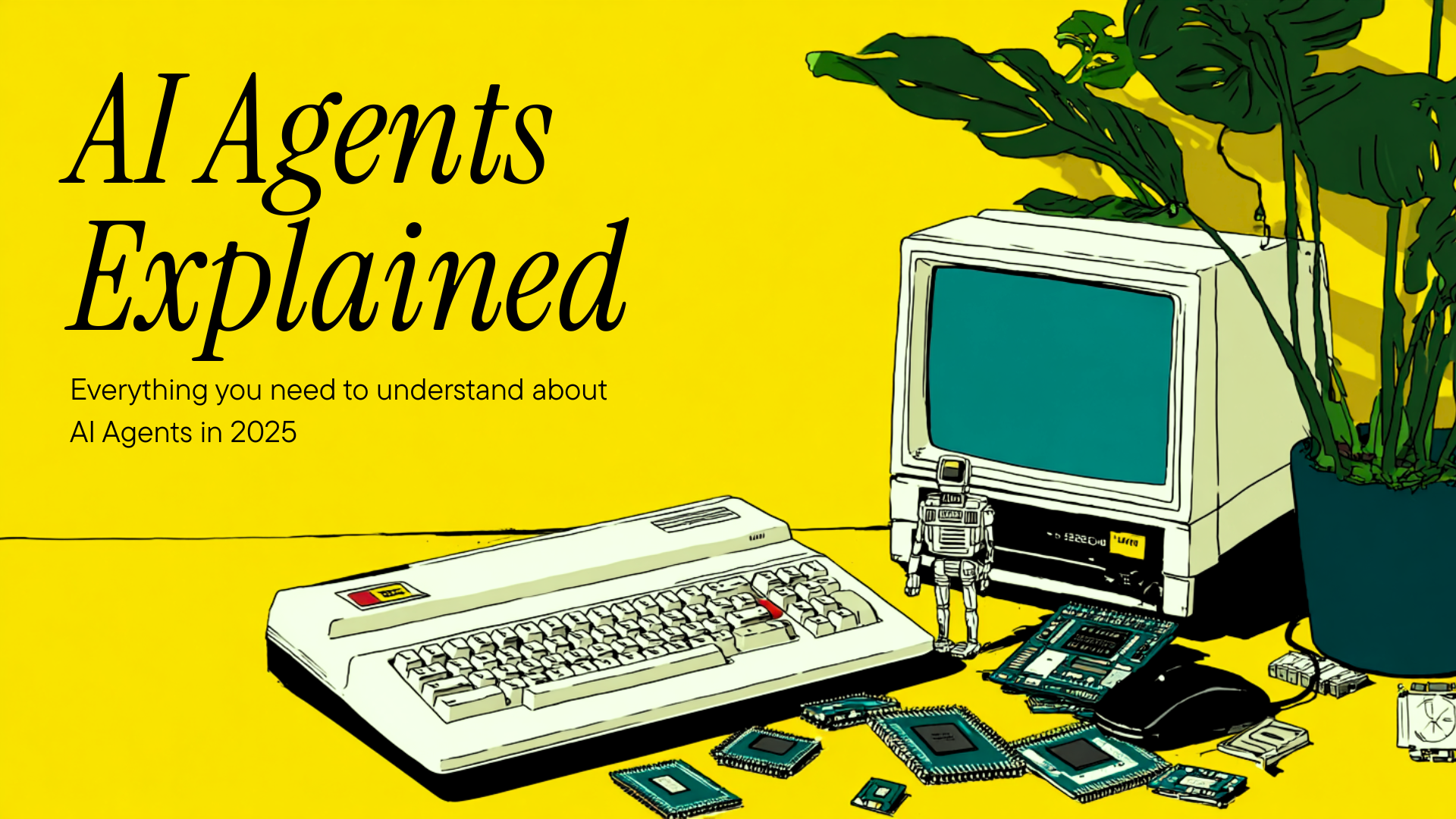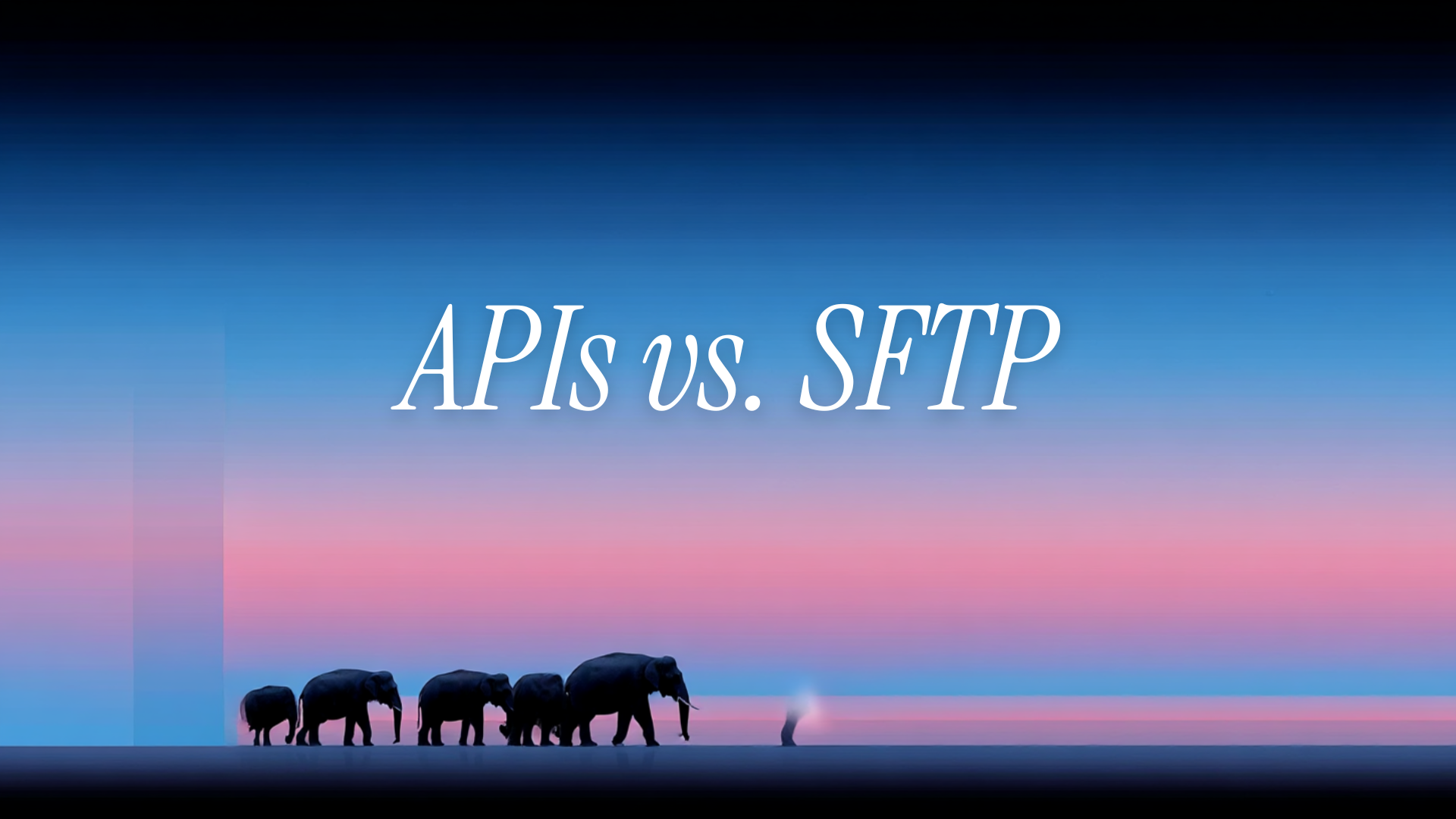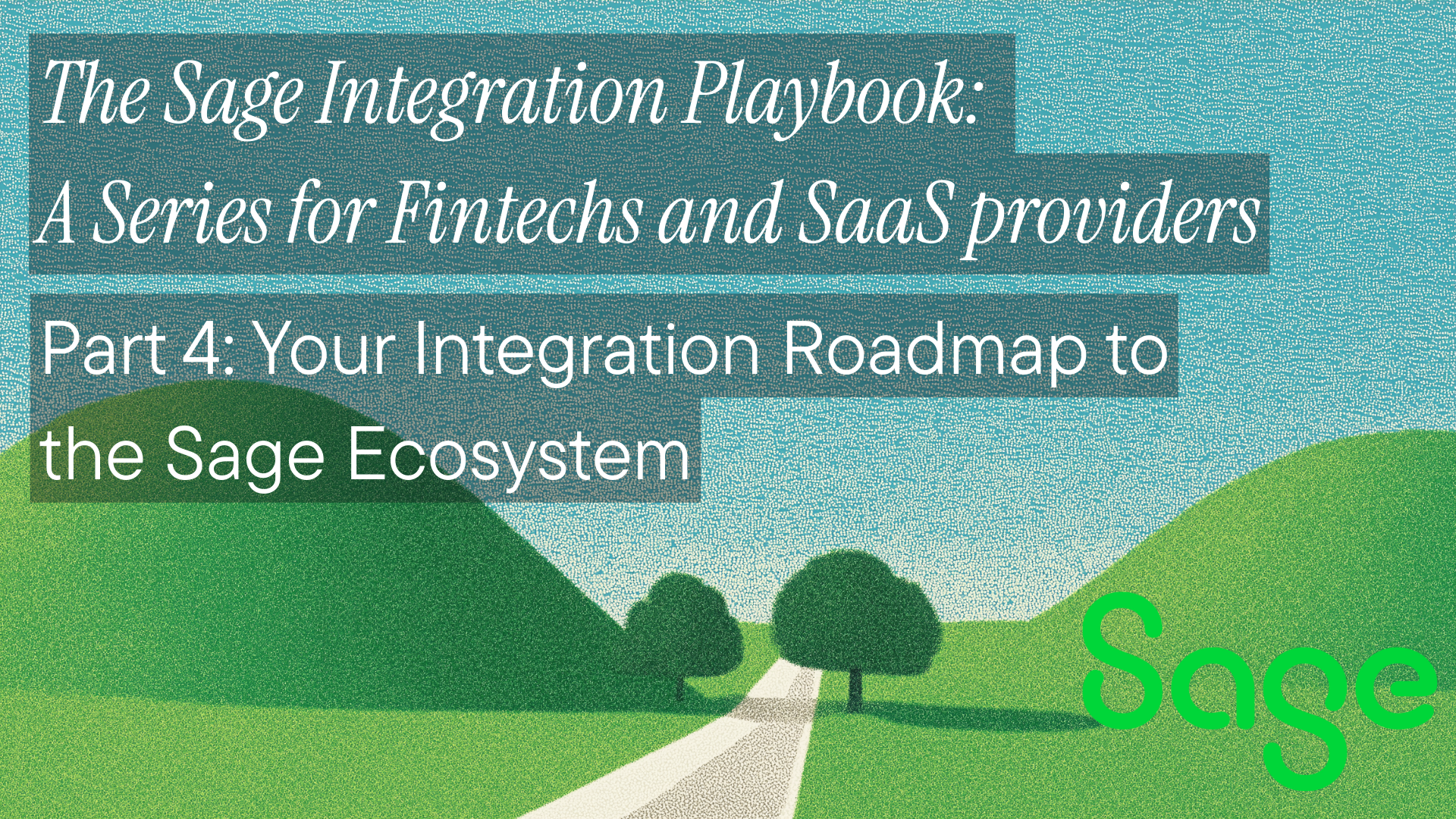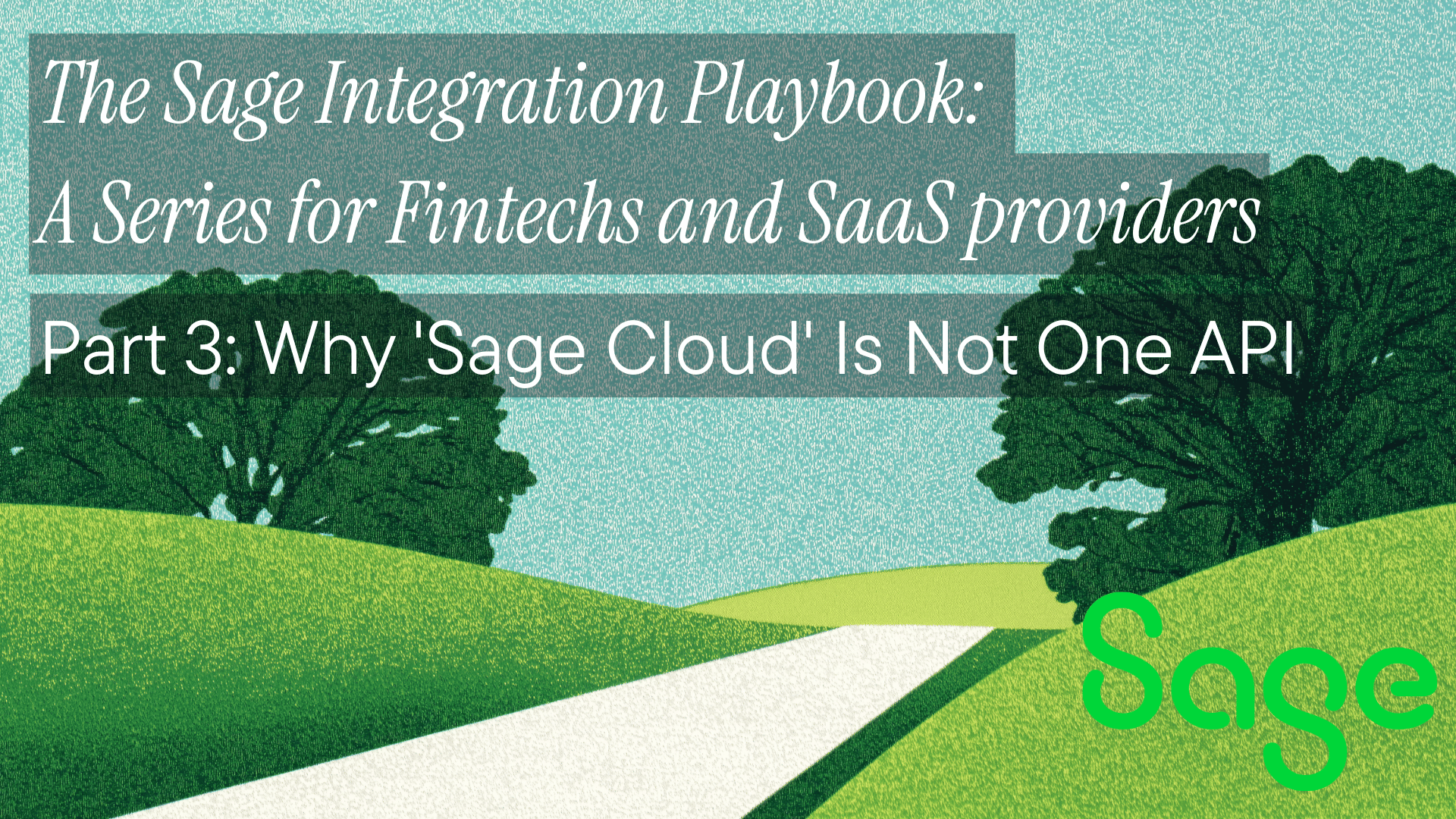2025 has emerged as a pivotal year for AI agents. In a recent talk, Andrej Karpathy, founding member of OpenAI and former head of AI at Tesla, said that this will be the decade of AI agents. AI agents extend LLMs with the capability to perform human-like tasks, for which they need special tools, infrastructure and guided supervision. Augmented AI working with human supervision will always lead to better and faster outcomes and many industry professionals are bullish on this technology from Vercel, AWS to Google. By checking the Google trends data for "AI Agents" over the past 12 months.

The search data peaks at 100% (record high) for June 2025. AI agents are in high demand. Understanding this surge in interest requires examining what makes AI agents fundamentally different from traditional software.
What are AI agents?
An AI agent is software programmed to perform actions by perceiving its environment.
What does this mean? AI agents are task-oriented software programs, and their primary goal is to perform a specific action that yields an output. They use LLMs, tools, web search, APIs, MCPs, etc., to support their plans and accomplish tasks.

Imagine you're put in a factory, which makes toys for children. You've been given a goal, "Start the production pipeline." How would you accomplish this?
First you'll look at the surroundings, perceive what's around you. Then you come up with a plan, "Look around for buttons which state 'START' and it's probably going to be around either ends of the conveyor belt" After some mental modeling, you start your action item, find the conveyer belt and there's going to be a 'START' button on a machine nearby. If you found what you're looking for, the objective is completed, else look for a different conveyor belt and repeat the process.
AI agents behave in the same manner. They're designed to perform actions and generate outputs. They're autonomous, meaning that just like humans, after being directed on what to do, they start functioning on their own without supervision. Based on the output, they can either chain different tasks or complete the process.
Now imagine, I give you the map of the factory and explain to you the whole process and how things in the factory work and how to read the map. You'll be very effective and would be able to complete your goal in one go and very fast. That's called context, and AI agents can use tools to fetch maps, search other websites, perform API calls, or use MCPs to do complex tasks easily. This is what makes AI agents fascinating, they're able to autonomously perform actions given a goal and can work without human supervision.
Characteristics of AI agents:
- Perception: AI agents are able to perceive and understand the environment they're in. This can be a code environment, a website, an application, etc.
- Tools: AI agents have multiple tools at their disposal, such as web search, APIs, MCPs and specialized software interfaces.
- Memory: Most AI agents use vector stores to save and retrieve context from memory, utilizing RAG for short-term or long-term tasks.
- Autonomy: Autonomy is the ability to operate independently and make decisions without constant, direct human intervention or supervision.
- Thinking and Reasoning: Modern agents possess the ability to reason, plan, and learn. Thinking and reasoning is powered by LLMs. Using LLMs, agents can develop strategic plans to achieve their goals, breaking down complex tasks into manageable steps.
While LLMs provide the cognitive capabilities, AI agents extend these capabilities into actionable intelligence, bridging the gap between language understanding and real-world task execution.
Industry-Specific Applications
These characteristics manifest in various real-world applications that are already transforming how we work and interact with technology across different industries:
- Software Development: Cursor, the coding editor, has an AI agent built in that can write, refactor, and debug code for a user from a single prompt. Windsurf, Void Editor, GitHub Copilot, Claude Code, CodeRabbit, Gemini CLI, and Codex are all AI coding agents that autonomously code in your desired programming language.
- E-commerce and Web Automation: Google's Project Mariner is an AI agent that can perform web-based tasks for you, like shopping and finding the best discounted products on Amazon, all from a single prompt.
- Enterprise Operations: Computer Use by Anthropic and Operator by OpenAI are agents that can perform various tasks like monitoring CCTV footage and operating Excel files within a container environment.
- Healthcare: AI agents are being deployed for patient monitoring, medical record analysis, and treatment recommendation systems that can process vast amounts of medical data autonomously.
- Finance: Investment firms use AI agents for automated trading, risk assessment, and fraud detection that can analyze market conditions and execute trades without human intervention.
- Customer Service: Advanced customer service agents can handle complex multi-step support tickets, escalate issues appropriately, and maintain context across multiple interaction channels.
These are some of the prominent AI agents being used by millions of people and hundreds of teams in large enterprise companies. However, AI agents differ from bots and assistants, which were already being used by many companies on their support websites to ask for quick questions. Let’s explore the key differences.
Distinguishing AI agents from bots and assistants
One thing that’s very common, terms "AI agent," "AI assistant," and "bot" are often used interchangeably, but they represent distinct levels of intelligence and autonomy. Understanding these differences is crucial because these three things differ fundamentally and serve different purposes.

Having established what distinguishes AI agents from simpler alternatives, let's examine the underlying architecture that enables their autonomous operation.
How AI agents work
AI agents are not just one smart program. They're like a team with different members, each having a specific job. One part thinks and plans, another gathers information, and others take action or remember things. These parts constantly talk to each other in what we call a "cognitive loop." Let's look at these main parts and how they work together.
The LLM acts as the agent’s brain.
Every AI agent contains a Large Language Model (LLM). This is the agent's "brain." The LLM does high-level thinking: it understands what you say, solves problems, breaks down goals, and creates plans. Unlike older software that follows fixed rules, an LLM can handle unclear or incomplete information. It can take your general requests, like "Plan a weekend trip to Antwerp for me," and turn them into a step-by-step plan (find flights, book hotels, create an itinerary). This ability to reason and plan using natural language is what makes AI agents smart and independent. The LLM acts as the main director, telling the other parts of the agent what to do to follow its plan.
How agents sense environments
The perception module is like the agent's senses. It collects raw information from the environment and turns it into a structured format that the LLM can understand. If an agent can't "see" its surroundings well, it won't be able to do its job properly.
This input can come from many places:
- User interactions: Like text messages, voice, or video commands.
- External systems: Like responses from websites, databases, or online tools.
- Physical sensors: Like cameras or other sensors in robots.
Types of Perception:
- Text Perception: This is common for software agents. It uses Natural Language Processing (NLP) to figure out what a user wants, identify important details like names and dates, and understand the meaning of text.
- Visual Perception: For agents that work with images, this uses computer vision to understand pictures and videos. It can recognize objects, read text from images, or analyze charts.
- Auditory Perception: This allows agents to process sounds. Speech recognition turns spoken words into text. It can also recognize other sounds, like detecting problems with equipment through audio.
- Multimodal Capabilities: The most advanced agents use Large Multimodal Models (LMMs). These can process different types of data at the same time. For example, an LMM-powered agent could look at an image, read your question about it, and then give a detailed answer.
Raw environmental data is only useful if the agent can process it intelligently to make informed decisions. ⠀
Thinking strategies for decision making
When an LLM thinks, it's not a quick, single decision. It's a cycle of planning, checking, and refining. Modern agents use special thinking strategies to guide the LLM's powerful but sometimes inconsistent thought process. These strategies help the LLM think more reliably, transparently, making it easier to fix mistakes. First, for any big goal, the agent breaks it down into smaller, easier-to-manage subtasks. This helps handle complex problems and increases the chances of success.
The agent uses one of these main thinking frameworks:
-
Chain-of-Thought (CoT) Prompting: This technique tells the LLM to show its step-by-step thinking before giving a final answer. Instead of just giving a conclusion, the model is asked to "think step by step." This makes the LLM follow a logical path and reduces errors, especially for math, common sense, or symbolic reasoning tasks. You can use it by simply adding "Let's think step by step" to the prompt, or by giving examples of step-by-step thinking. CoT has been used by AI models like DeepSeek R-1, Claude’s thinking mode to iterate over ideas and then start an action.
-
Tree-of-Thoughts (ToT) Prompting: ToT is a more advanced way of thinking that goes beyond CoT's straight-line approach. With ToT, the agent explores several thinking paths at the same time, like branches on a tree. At each step, it creates a few possible next thoughts, checks if they are good ideas, and decides which paths to explore further. This allows the agent to look ahead, compare different ways of solving a problem, and even go back if a certain approach isn't working. This careful exploration and self-checking make ToT very effective for complex problems, like puzzles or creative writing, where the best solution isn't immediately clear. Claude Code and Cursor uses ToT prompting to fix and debug tasks and guide the AI agent through different tasks.
-
The ReAct (Reason+Act) Framework: ReAct combines thinking with doing. Instead of making a full plan at the beginning, a ReAct agent works in a loop: Think → Act → Observe.
- Thought: The agent thinks about the current situation and decides what to do next.
- Action: Based on its thought, the agent performs a specific action, usually by using an external tool (like searching the web or checking a database). We’ll discuss the action module in the next section.
- Observation: The agent gets the result of its action (like search results or database output). This observation then feeds back into the next "Thought" step, allowing the agent to change its plan based on real-world information. This link between thinking and acting makes ReAct agents highly adaptable and helps them use factual, up-to-date information, which can prevent problems like LLM "hallucinations" (making up information).
Once an agent determines what to do, it needs action mechanisms to translate decisions into concrete actions. Action and reasoning are coupled together, and the agent works in increments to perform action. This action is described in the action module.
The action module
The action module is like the agent's "muscles." It takes the decisions from the LLM (the brain) and does things in the real world, whether it's digital or physical.
Imagine a continuous cycle: the agent thinks about what to do, then it acts on that thought, and then it observes what happened. This observation then helps the agent plan its next move.
The LLM doesn't directly do the action. Instead, it creates a clear instruction for the action, often in a structured format like JSON or programming code. This instruction is then given to another part of the agent, called the "orchestrator." The orchestrator understands this instruction, picks the right tool, and makes the action happen. This separation makes agents reliable.
An agent can perform many types of actions, depending on its tools:
- Using Tools: This involves using external functions like making API calls, doing math, or searching a database.
- Gathering Information: This means doing web searches to find current information or getting specific documents from a knowledge base.
- Interacting with the Environment: This could be clicking buttons on a website, filling out forms, or controlling robots.
- Communicating: This includes sending messages to users, working with other AI agents, or creating reports.
The agent can take actions using tools, functions, etc. available to it. The important part is that each think-act-observe loop needs to be memorized or stored somewhere. Just like humans where we learn from outcomes, the AI agent has to get better each turn. The memory module comes into play where each thinking linked to outcome is stored in either long term or short term memory.
The memory module
Memory is what makes an AI agent remember past actions, context, and related decisions. Without it, the agent would start fresh with every interaction and couldn't do complex tasks or learn from past experiences.
AI agents have two main types of memory:
- Short-Term Memory (STM) / Working Memory: This is like a temporary "scratchpad" for the agent. It holds information relevant to the current task or conversation, like the recent chat history. It's fast to access, but has limited space, and the information is lost when the session ends.
- Long-Term Memory (LTM): This is where the agent stores information permanently, allowing it to remember things across many sessions and learn from past experiences. LTM has a huge capacity and doesn't forget. It can be divided into:
- Episodic Memory: Stores specific past events and experiences, like remembering a user's previous choices.
- Semantic Memory: Holds general facts, concepts, and rules about the world. This is often stored in knowledge bases.
- Procedural Memory: Stores learned skills and behaviors, helping the agent perform tasks automatically without needing to think them through every time.
A key technology for long-term memory is the vector database. These databases store information as numerical representations (vector embeddings). When the agent needs to remember something, it can search for memories that are conceptually similar to its current question, not just an exact keyword match. This helps agents retrieve relevant information based on meaning, making them more intelligent. While memory stores what actions were taken, and what were the outcomes. The important part is learning from them, this is what makes any agent smart overtime, aka learning from experience. The feedback loop comes into play here.
The feedback and learning loop
This is the part that allows an agent to truly improve and adapt. It lets the agent check how well its actions worked, find mistakes, and then adjust its plans or strategies for the future. This self-improvement is what makes an AI system dynamic and learning, not just static. Here's how this learning happens:
- Reinforcement Learning (RL): The agent learns by trying things out. It gets "rewards" for good actions and "penalties" for bad ones, and it adjusts its behavior to get more rewards over time.
- Human-in-the-Loop (HITL) Feedback: Humans directly guide the agent. Users can rate responses, correct mistakes, or give instructions for improvement. This helps the agent learn from real-world interaction.
- Self-Critique and Reflection: Advanced agents can review their plans and actions after finishing a task. They look for flaws or ways to improve, helping them get better on their own. This ability to reflect is important for agents to improve without constant human oversight.
Feedback is what makes the AI agent smarter and strengthens certain pathways, making sure that similar actions can be performed faster and with more precision.
An AI agent's precision also depends on the tools and what data it’s working upon. Not just feedback and learning loops. AI agents with best-in-benchmark LLM with best action strategies will perform poorly if the right data isn’t present. So the complete ecosystem of tools and data has to be there.
The agentic ecosystem: tools and data
An AI agent's intelligence is not solely a product of its internal architecture and LLMs. It’s also shaped by the external ecosystem it operates within. This ecosystem consists of the tools that extend its capabilities and the data that fuels its reasoning. A modern agent must know how to use tools to operate and perform actions in the external environment.
Tools and capabilities
Tools are what allow an agent to move beyond generating text and take meaningful actions in the real world. An agent's practical utility is often a direct function of the quality and range of tools it can access and effectively utilize.
- API Integrations and Function Calling This is the most common form of tool use. Agents leverage Application Programming Interfaces (APIs) and functions to interact with external software and services. This allows them to perform actions like sending a message on Slack, creating a task in Jira, retrieving real-time stock prices, or searching the web.
- Code Interpreters A particularly powerful tool is the code interpreter, which provides the agent with a sandboxed environment to write and execute code, most commonly Python. This capability unlocks applications like complex mathematical calculations, data analysis and visualization, and dynamic execution of tasks for which no pre-existing API exists.
- Web Browsers To interact with websites, agents can be equipped with specialized browser tools. These enable the agent to perform actions like a human user: navigating to URLs, reading page content, filling out forms, and clicking links. This can be achieved by parsing the underlying HTML source code or, in more advanced cases, by using computer vision to analyze screenshots and visually identify interactive elements.
- Local Shell Access In some configurations, agents can access a local command-line shell. This is extremely powerful but high-risk, as it allows the agent to execute commands directly on the host machine, enabling interaction with local files and processes.
With each day, there are newer and specialized tools coming along that are helping AI agents to be able to perform better. Like browser automation tools, MCPs, etc.
Data and orchestration
High-quality, relevant, and timely data is important for any intelligent system. An agent's ability to make decisions is fundamentally dependent on the data it can access and how well it can coordinate complex workflows.
- Data Grounding and Retrieval-Augmented Generation (RAG) A primary challenge for LLMs is "hallucination", generating plausible but factually incorrect information. Data grounding anchors an agent's responses to verifiable, authoritative sources to mitigate this issue. The best technique for grounding AI is Retrieval-Augmented Generation (RAG). You can read in detail about RAG here.
- Agentic RAG This is an advanced application where the agent takes a more proactive role in the retrieval process. Instead of a static retrieval step, an agentic RAG system can decide when and from which sources to retrieve information, iteratively refine search queries, validate retrieved information, and synthesize facts from multiple documents to answer complex questions.
- Tool Selection and Error Handling As agents are equipped with more tools and connected to more data sources, managing complexity becomes critical. The orchestration layer must decide which tool to use at each step based on natural language descriptions and defined parameters of available tools.
This ecosystem of tools, data, and orchestration transforms simple language models into powerful, autonomous systems capable of complex real-world tasks. As this ecosystem is still in the growth phase, we must address some limitations and challenges of these AI agents. They’re not 100% perfect and requires human supervision along with tight security boundaries.
Current limitations and future challenges
While AI agents show tremendous promise, they face several significant limitations that developers and organizations must consider:
- Reliability and Error Handling AI agents can make mistakes or encounter unexpected situations that break their execution flow. Unlike deterministic software, agents operating in complex environments may misinterpret instructions or fail to handle edge cases gracefully. Building robust error recovery mechanisms remains a major challenge.
- Context Switching and Memory Limitations: Most current agents struggle with maintaining context across long conversations or complex multi-day tasks. While vector databases help with long-term memory, efficiently managing and retrieving relevant context at the right time is still an unsolved problem.
- Security Vulnerabilities: Autonomous agents that can access external systems and APIs introduce new security risks. They may be vulnerable to prompt injection attacks, unauthorized access to sensitive data, or manipulation by malicious actors who understand how to exploit their reasoning patterns.
- Cost and Resource Requirements Running sophisticated AI agents requires significant computational resources, especially for complex reasoning tasks. The cost of LLM API calls, vector database storage, and cloud infrastructure can quickly escalate for high-volume applications.
- Unpredictable Behavior The same agent may produce different results for identical inputs due to the non-deterministic nature of LLMs. This unpredictability makes it challenging to use agents in mission-critical applications where consistency is paramount.
- Integration Complexity Connecting agents to existing enterprise systems, databases, and workflows often requires custom development and careful consideration of data formats, security protocols, and business logic.
Choosing the Right Agent for Your Needs
Not every task requires a sophisticated AI agent. Here's a framework for determining the appropriate level of automation:

If your requirements are simple, then chat-bots and assistants can do the job and there are many built-in tools for them. And if the task you’re working is complex, then you need to build an AI agent, and there are many tools and platforms present.
Getting Started: Tools and Platforms
For those looking to explore or implement AI agents, several platforms and frameworks can accelerate development:
Popular Frameworks:
- LangChain: Comprehensive framework for building LLM-powered applications with agent capabilities
- AutoGPT: Open-source autonomous agent framework
- Crew AI: Multi-agent collaboration framework
- Microsoft Semantic Kernel: Enterprise-focused agent development platform
AI Providers:
- OpenAI API: Provides access to GPT models with function calling capabilities
- Anthropic Claude: Offers advanced reasoning capabilities for agent development
- Google Vertex AI: Comprehensive AI platform with agent-building tools
- Azure AI: Microsoft's enterprise AI services with agent templates
As these tools continue to mature and new capabilities emerge, AI agents will keep evolving rapidly towards even more sophisticated applications and will be able to handle complex tasks like payments, healthcare data filling, etc.
Conclusion
AI agents represent a fundamental shift in how we interact with technology, from tools we operate ourselves to intelligent systems that operate on our behalf. As this technology matures, organizations that thoughtfully adopt and integrate AI agents will gain significant competitive advantages in efficiency, capability, and innovation. The future isn't about full automation; it's more focused on augmentation. We're moving toward a world where humans and agents collaborate as partners, each contributing their unique strengths to achieve outcomes neither could accomplish alone. The key to success lies not just in implementing the most advanced agent technology, but in carefully matching agent capabilities to real business needs while maintaining appropriate human oversight and ethical considerations. The decade of AI agents is just beginning, and those who start learning and experimenting now will be best positioned to capitalize on this transformative technology.
References and research papers
Ready to get started?
Scale your integration strategy and deliver the integrations your customers need in record time.








